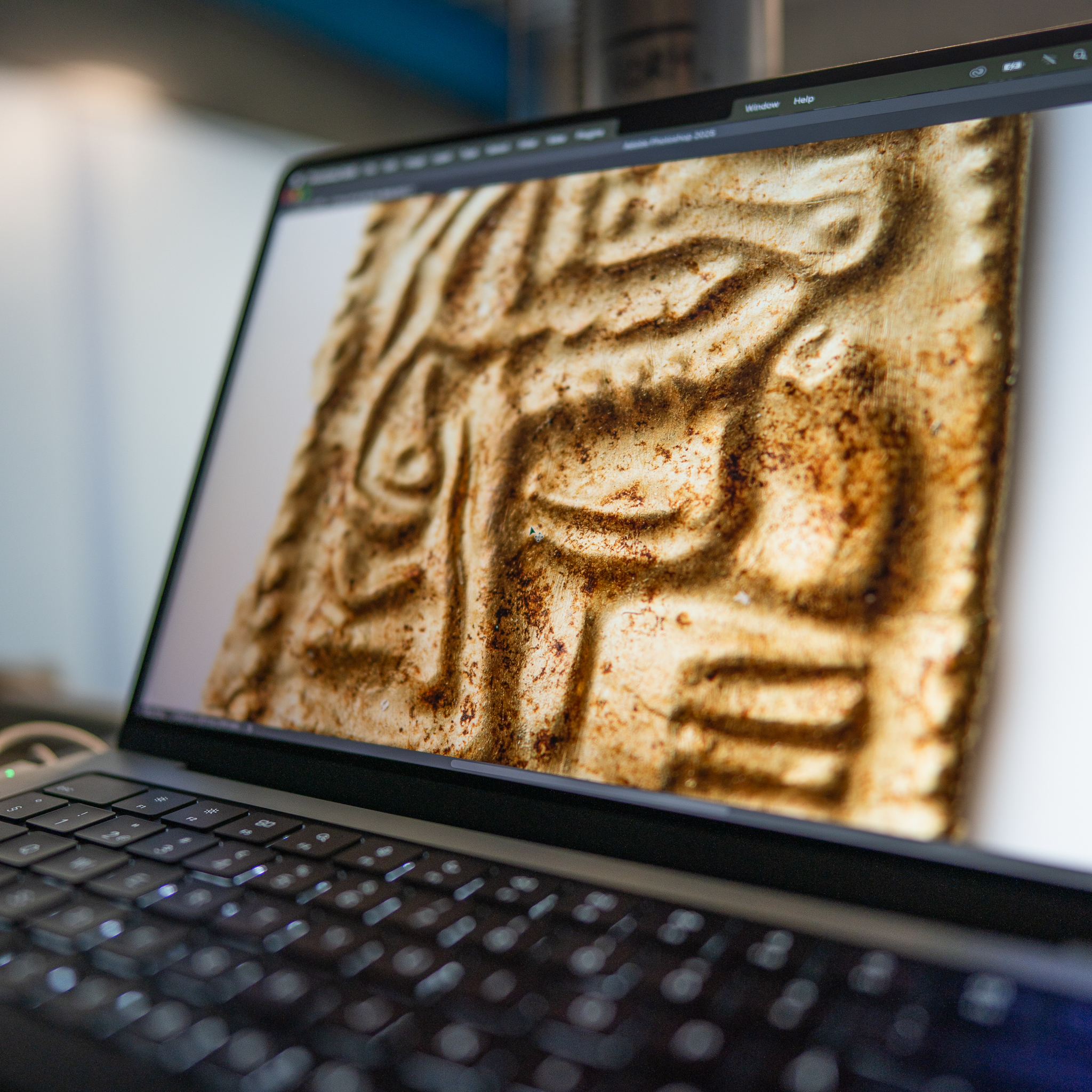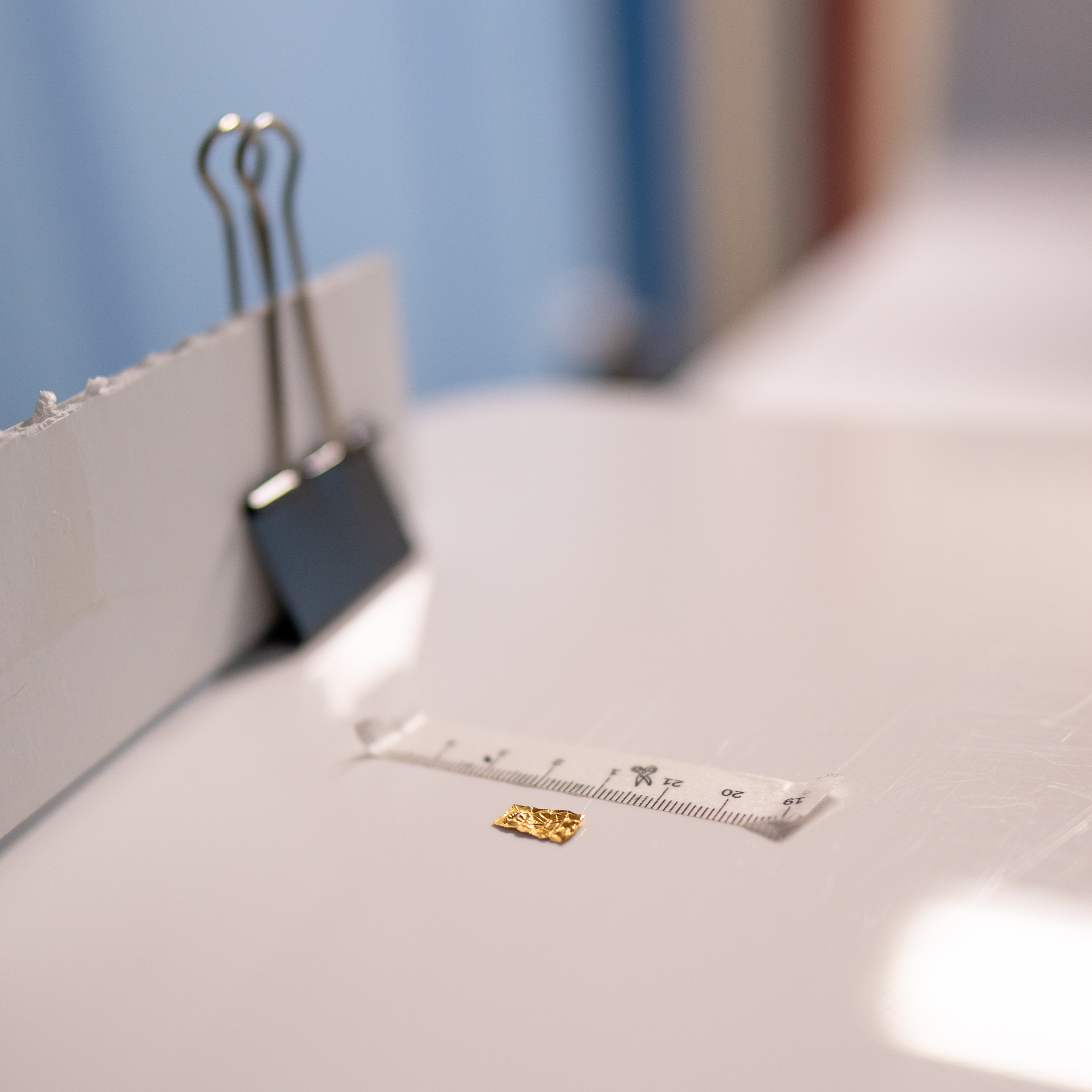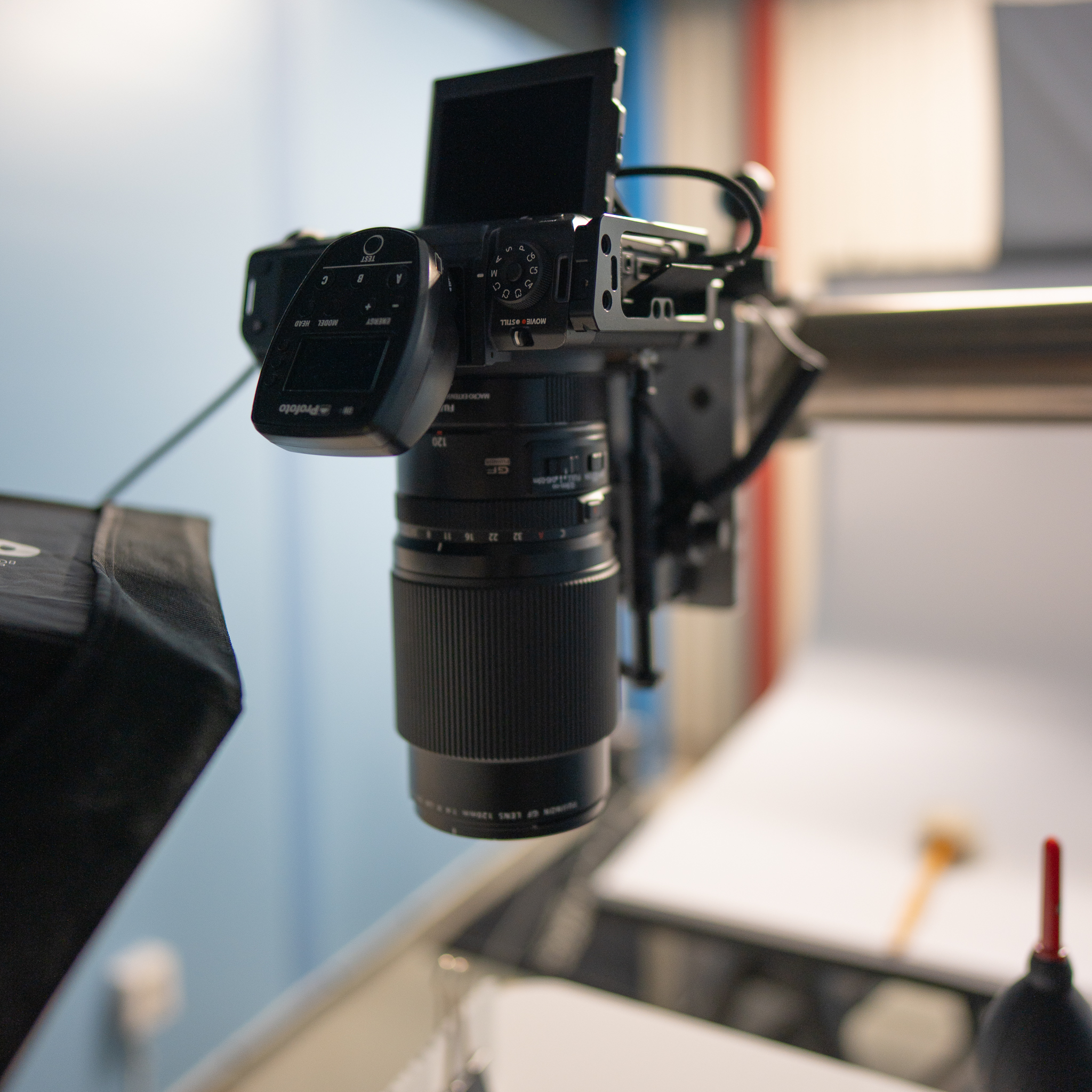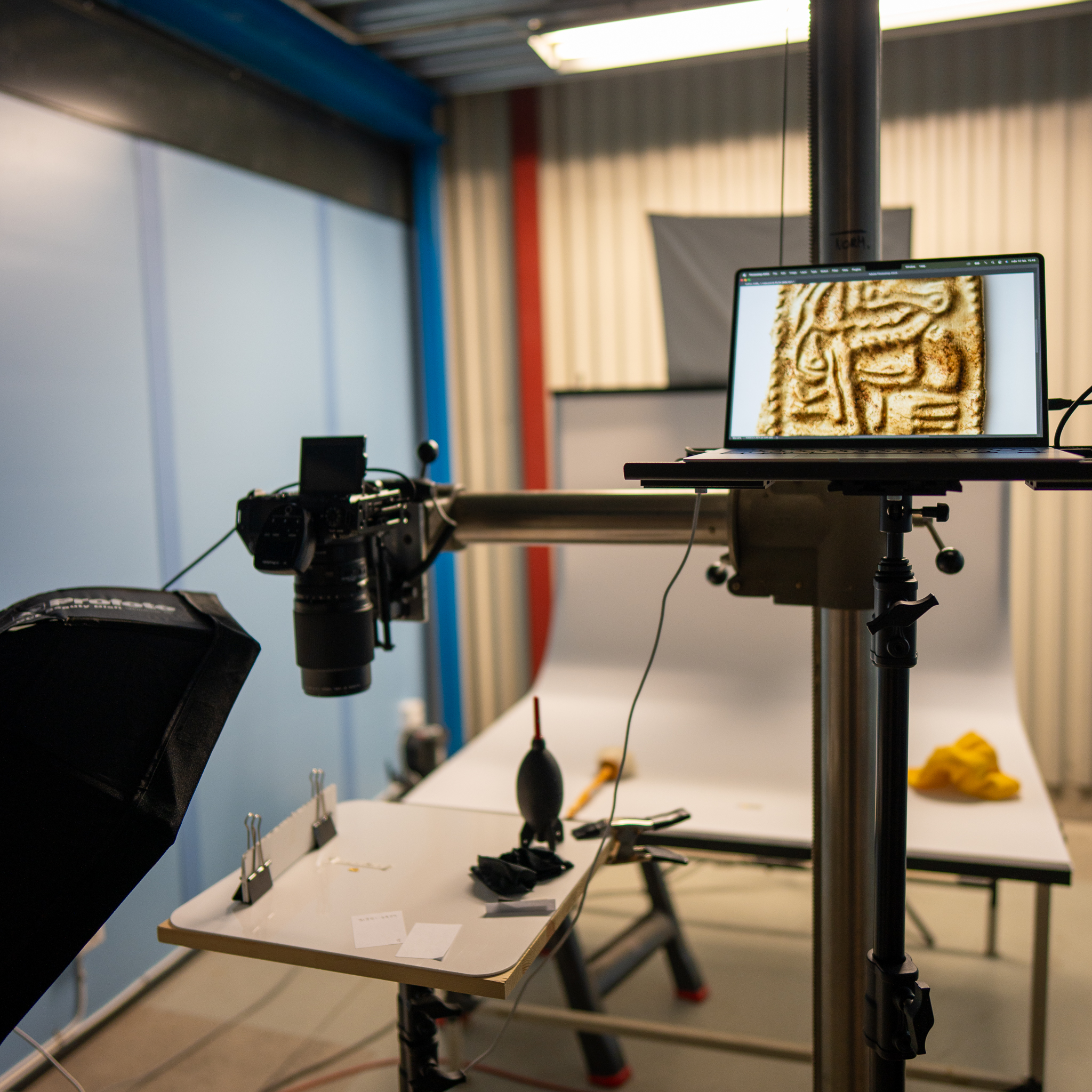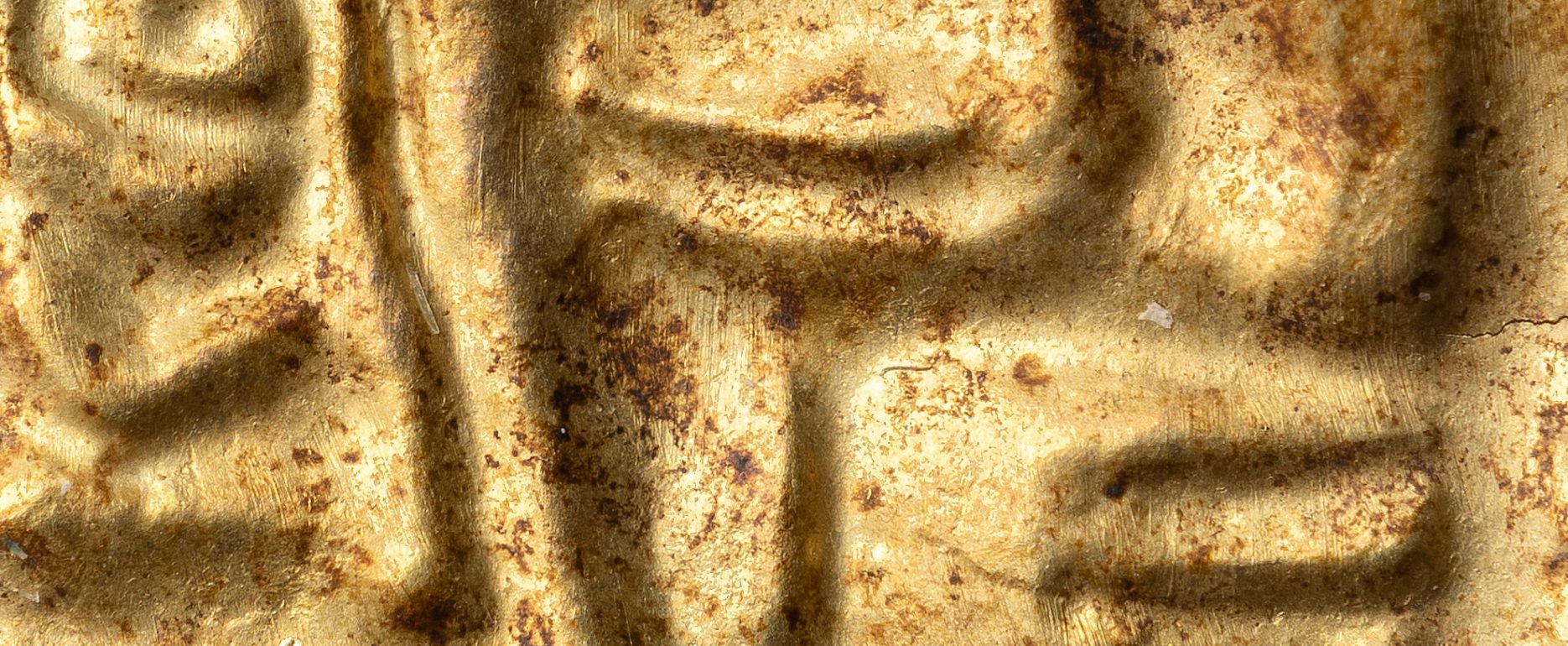In collaboration with Lund University, I had the opportunity to photograph the complete collection of gold foils – known as guldgubbar – from the Iron Age site of Uppåkra in southern Sweden. These tiny figures, no larger than a stamp and made of wafer-thin gold, are among the most enigmatic artefacts from Scandinavian prehistory.
The initiative for this documentation came from Professor Mats Roslund, who also secured funding from the Royal Gustavus Adolphus Academy for Swedish Folk Culture through the Tage and Hervor Cervin Fund for Humanistic Research. The museum provided matching support, which made it possible to finally document the entire assemblage of foils and cut-out gold figures from Uppåkra in high photographic quality.
The conservation work was carried out by Lovisa Dal, who carefully prepared each individual piece for photography. The images were produced using the PHOTARCH method – a standardised approach to photographing archaeological artefacts that allows for consistency across time, collections and institutions.
To ensure the highest level of image fidelity, I was fortunate to have the support from FujiFilm Nordic, who generously provided access to the Fujifilm GFX 100 II medium format camera paired with the GF 120mm f/4 macro lens coupled with the 18mm extension ring. The lighting setup was intentionally simple: a single Profoto B2 strobe positioned at a fixed angle, complemented by a small piece of cape board used as a reflector to softly lift the shadows. This combination allowed for controlled highlights, fine surface detail, and minimal glare – all essential when working with reflective materials like gold.
Over 120 gold foils have been found at Uppåkra, many of them deposited in postholes and along the inner walls of what is interpreted as a ceremonial building. They may once have glimmered in the firelight, attached to walls or pillars. The discovery of four matrices (dies) at the site even suggests that some of the figures were produced locally.
Photographing these pieces presents a unique challenge: they are delicate, detailed, and highly reflective – requiring precision in both lighting and reproduction. The goal was to create images that serve not only academic purposes but also allow a wider audience to appreciate the remarkable artistry of these figures.
Take a piece of the past home
High-resolution prints of the Uppåkra gold foil figures are available to purchase – beautifully reproduced using archival pigment inks on fine art paper.
All images in this collection are free to download and use, following the principles of PHOTARCH. The aim is to make high-quality documentation of archaeological artefacts accessible to researchers, educators, and the public. You are welcome to use the images for academic, educational, or creative purposes — with proper attribution to Lund University Historical Museum.

